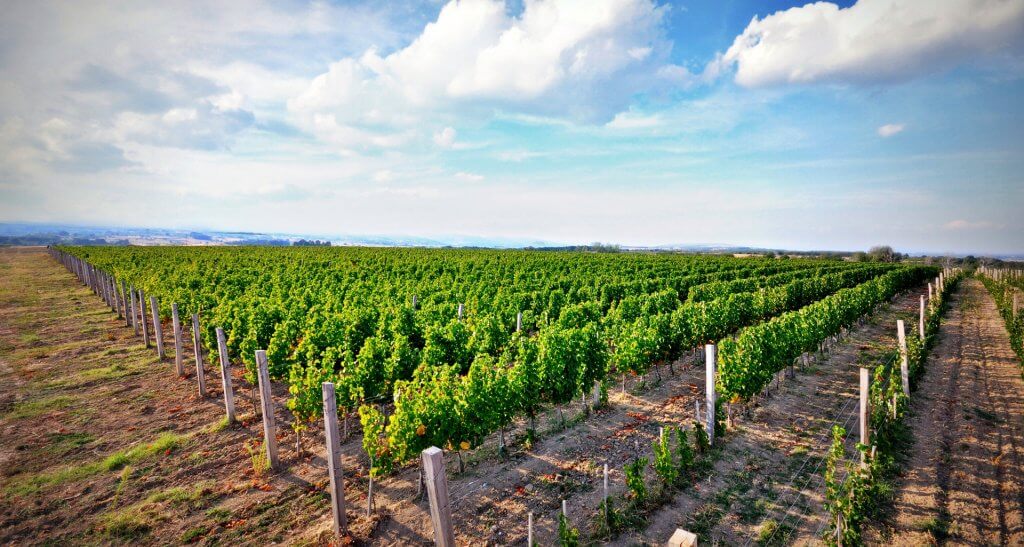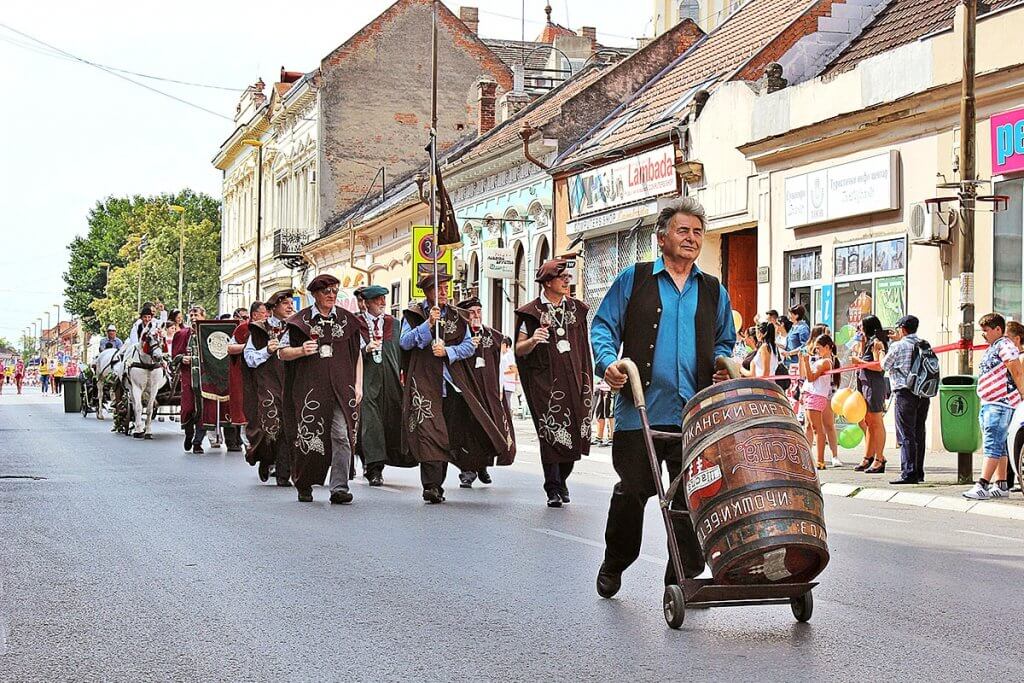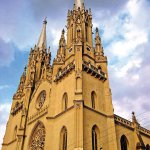According to some historical sources, Vršac viticulture goes back to the times of the Dacians and Roman rule. However, the earliest written evidence of wines produced in Vršac goes back to the 15th century and a 1494 sales-bill for wine delivered to the court of the Polish King Vladislaw II. Although Turkish writer Evliya Celebi noted in his travel accounts that vineyards covered the Vršac Hill slopes and produced sweet tasty grapes, it was only with the extensive Austro-Hungarian colonization during the rule of Maria Theresa (1740-1780) that winemaking really developed in the Banat region.
The large Helvetia Cellar, built and equipped in 1880 by Swiss wine merchant Bernhard Staub, lies along the road to the Mesic Monastery. The profound importance of winemaking for Vršac is probably best illustrated by the grapevine found on the municipal coat-of-arms, and representations of grapes decorating the facades of its old buildings.
By the end of 19th century, Vršac had 10,000 hectares of vineyards. At the time these were the largest vineyards in Austria-Hungary, and possibly even in all of Europe, since many continental vineyards had been destroyed by the phylloxera epidemic. The end of Ottoman rule and the arrival of German settlers from the Rhine made viticulture the main source of income in the village of Gudurica, not far from Vršac. The village’s ethnic diversity was further enriched after World War II, when Slovenes, Macedonians, and people from Bosnia, Lika, Banija and Kordun also settled there.
Today, Gudurica has a population of 1,500 comprising 22 di erent nationalities, including a French woman. 80 of the village’s 400 households cultivate vineyards on around 100 hectares of land. When one considers that the local Vršacki Vinogradi plantation covers 1,000 hectares, this is certainly the most vineyard-oriented village in the all of Serbia.
Viticulture and Winemaking Today
The Vršac wine-producing region covers hilly terrain that makes up the farthest western slopes of the Carpathian mountain range. The Vršacki Vinogradi company is the leading winemaker. It has -well over 1,700 hectares of vineyards, the largest share of the region’s total of 2,100 hectares.
The dominant soil types of the region include smonitza (vertisol), eutric cambisol and diluvial soils with quicksand. The area has a continental climate.
Ancient, native grape varieties include Župljanka, Smederevka, White Chasselas, Rkatsiteli, and Kreaca. Kreaca is an ancient white grapevine – a variety native to Vršac. It used to be grown throught the Banat plain. White grape varieties dominate in the Vršac vineyards. Red varieties are very rarely found.

Matalj vineyard
For a connoisseur, the Vršac Hills Gudurica and Veliko Središte are synonymous with top-quality grapes and good wine. Favorable geographic and climatic factors have traditionally inspired the locals to grape and wine production.
Today, the entire area where the Vršac hills and the gentle Banat plain meet is covered with vineyards. It is certainly one of the most important viticulture regions in Serbia.
Muscat Ottonel, Chardonnay, Pinot Blanc, Rhine and Italian Riesling stand out among the numerous top quality wines produced in this region. The Banatski Rizling white table wine is very popular. It is a blend of Italian Riesling, Smederevka, Župljanka and Kreaca.
Vintage days “Grapeball”
Grapeball has a long tradition and is held annually, each third weekend in September. The first wine exhibit in Vršac was held at the local bistro Kod Dva Ključa in 1857. The earliest written document dates from 1494 (when the court of the Hungarian king Vladislav II paid 10.5 ducats for a barrel of Vršac wine). The mascot and the protector of vintage is called Vinko Lozić, created by Serbian playwright Jovan Sterija Popović and a “direct descendant of the god Bacchus”.

He presides over and moderates the three-day parade and ceremony. At the grand opening, the mayor hands over the keys to the city, which are returned at the grand closing. During Grapeball, visitors can attend numerous cultural, commercial and sports events, as well as various grape and wine exhibits.
Vršac Sightseeing
 Vršac, a town of 40,000, lies about 90km east of Belgrade, close to the Romanian border. The following recommended city sights will fulfill your tourist experience: 14th century Vršac Tower on Vršac Hill; 18th century City Hall (Magistrate); 18th century bishop’s court (Vladicanski Dvor) with a rich treasury; 16th century Mesic Monastery (10km from Vršac); 18th-century Ancient Pharmacy. This is located next to the permanent exhibition of the Museum of St. Nicholas Orthodox Cathedral from 1785; the Roman Catholic St. Gerhard Church built in 1863, and the Holy Cross Chapel dating from 1720.
Vršac, a town of 40,000, lies about 90km east of Belgrade, close to the Romanian border. The following recommended city sights will fulfill your tourist experience: 14th century Vršac Tower on Vršac Hill; 18th century City Hall (Magistrate); 18th century bishop’s court (Vladicanski Dvor) with a rich treasury; 16th century Mesic Monastery (10km from Vršac); 18th-century Ancient Pharmacy. This is located next to the permanent exhibition of the Museum of St. Nicholas Orthodox Cathedral from 1785; the Roman Catholic St. Gerhard Church built in 1863, and the Holy Cross Chapel dating from 1720.